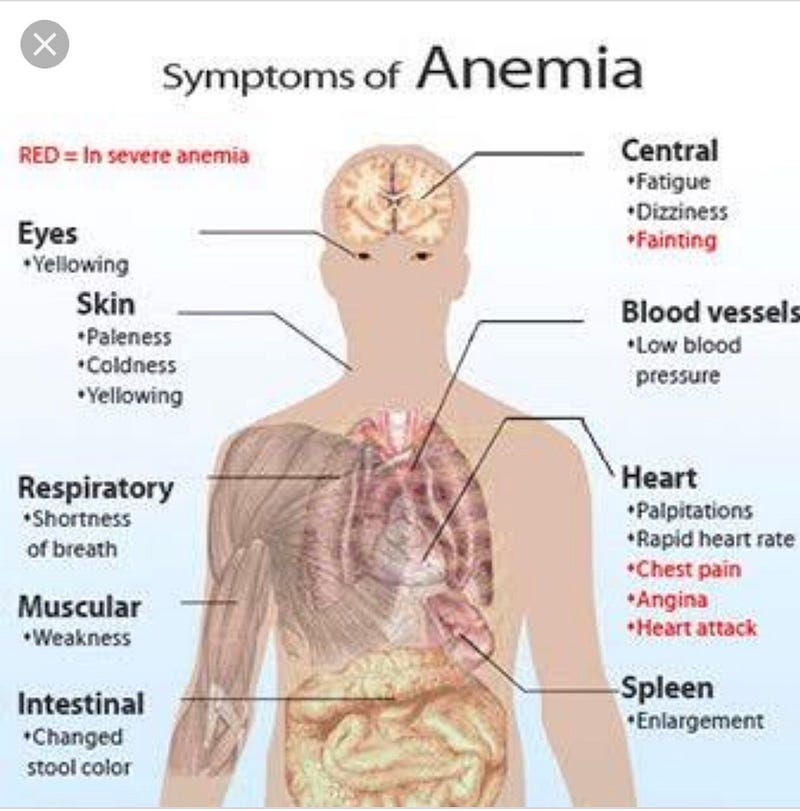ANEMIA
Understand the loss of blood cells
Anemia happens when the number of healthy red blood cells in your body is too low. Red blood cells carry oxygen to all of the body’s tissues, so a low red blood cell count indicates that the amount of oxygen in your blood is lower than it should be. Many of the symptoms of anemia are caused by decreased oxygen delivery to the body’s vital tissues and organs.
- Certain forms of anemia are hereditary and infants may be affected from the time of birth.
- Women in the childbearing years are particularly susceptible to iron-deficiency anemia because of the blood loss from menstruation and the increased blood supply demands during pregnancy.
- Older adults also may have a greater risk of developing anemia because of poor diet and other medical conditions.
Causes
There are more than 400 types of anemia, which are divided into three groups:
- Anemia caused by blood loss
- Anemia caused by decreased or faulty red blood cell production
- Anemia caused by destruction of red blood cells
Factors that increase red blood cell destruction include:
- hemorrhage from:
- accidents
- gastrointestinal lesions
- menstruation
- childbirth
- excessive uterine bleeding
- surgery
- cirrhosis, which involves scarring of the liver
- fibrosis, or scar tissue, within the bone marrow
- hemolysis, which is the rupture of red blood cells that can occur with some medications or Rh incompatibility
- disorders of the liver and spleen
Overall, however, iron deficiency is the most common cause of anemia. Iron intake is a major index for the health assessment of nations. According to the World Health Organization (WHO), an estimated 2 billion people worldwide have anemia, and many have it because of iron deficiency.
Symptoms
Symptoms common to many types of anemia include the following:
- Easy fatigue and loss of energy
- Unusually rapid heart beat, particularly with exercise
- Shortness of breath and headache, particularly with exercise
- Difficulty concentrating
- Dizziness
- Pale skin
- Leg cramps
- Insomnia
Diagnosis
Anemia is usually detected, or at least confirmed, by a complete blood cell (CBC) count. A CBC test may be ordered by a physician as a part of routine general checkup and screening or based on clinical signs and symptoms that may suggest anemia or other blood abnormalities.
Today, this work is automated. Six component measurements make up a CBC test:
- Red blood cell (RBC) count
- Hematocrit
- Hemoglobin
- White blood cell (WBC) count
- Differential blood count
- Platelet count
Treatment
The treatment of the anemia varies greatly. First, the underlying cause of the anemia needs to be identified and corrected. For example, anemia as a result of blood loss from a stomach ulcer should begin with medications to heal the ulcer. Likewise, surgery is often necessary to remove a colon cancer that is causing chronic blood loss and anemia.
Sometimes iron supplements will also be needed to correct iron deficiency. In severe anemia, blood transfusions may be necessary. Vitamin B12 injections will be necessary for patients suffering from pernicious anemia or other causes of B12 deficiency.
In certain patients with bone marrow disease (or bone marrow damage from chemotherapy) or patients with kidney failure, epoetin alfa (Procrit, Epogen) may be used to stimulate bone marrow red blood cell production.
Complication
hemoglobin has the important role of delivering oxygen to all parts of the body for consumption and carries back carbon dioxide back to the lung to exhale it out of the body. If the hemoglobin level is too low, this process may be impaired, resulting in low levels of oxygen in the body (hypoxia).
Dr. Shivani Bhardwaj

Comments
Post a Comment